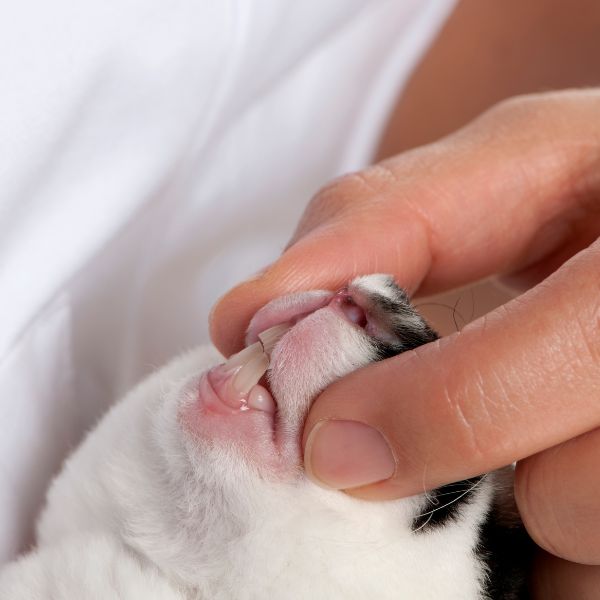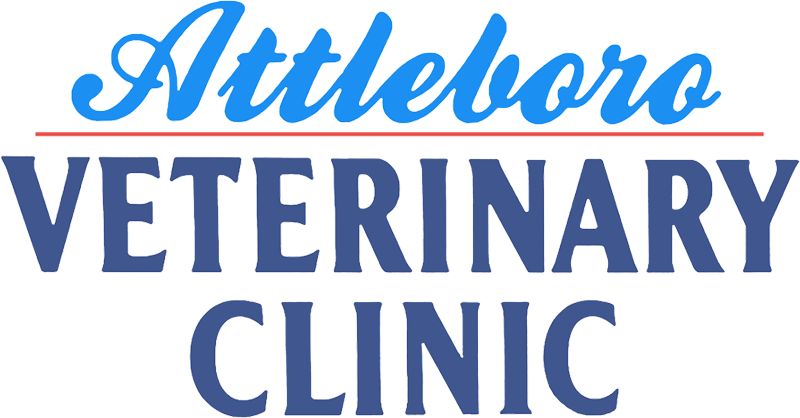Pet Dental Care
Discover what to expect for your pet’s dental care at Attleboro Veterinary Clinic, where we treat your companion’s oral health with personalized attention.
Pet Dental Care in Attleboro, MA
Our dental care process is designed with clarity and care. Once your pet is checked in and ready for their procedure, our technician and veterinarian will administer a sedative injection to help calm them. After sedation, the technician and veterinarian will intubate your pet, placing a tube in their trachea to maintain anesthesia during the procedure. This ensures your pet remains calm and still for their safety.
Our veterinarian will conduct a thorough examination of your pet’s mouth. Sometimes, more dental disease may be present than what was initially observed during their appointment. The dental technician will then use an ultrasonic dental scaler to remove tartar buildup and some staining from your pet’s teeth, however, some teeth may have permanent staining.
After scaling, we reassess your pet’s teeth to identify any additional dental issues that may have been hidden beneath the tartar. The goal is to determine if each diseased tooth can be saved or if it is in your pet’s best interest to extract it. Any loose or severely diseased teeth will be removed.

The reason for extracting teeth is to:
Help prevent any dental disease from worsening and improve breath odor.
Prevent an infection or further infection from possibly going into the jawbone.
Prevent bacteria from badly infected teeth from spreading to other bodily organs.
To help prevent your pet from developing a tooth abscess or decay.
Please note that we will not be able to call you during your pet’s dental procedure while they are under anesthesia to discuss any possible extractions. We aim to minimize anesthesia time and maximize your pet’s monitoring safety. Therefore, we ask that you be prepared ahead of time that extractions may be needed in your pet’s best interest. Pets do fine after extractions; often, they are better than ever after some initial discomfort.
If extractions are done, a pain medication injection is given before your pet recovers from anesthesia. Depending on the veterinarian and owner’s discretion, pain medication may be prescribed to go home. Antibiotics are prescribed at the veterinarian’s discretion.
In veterinary patients, the risk of jaw fractures is uncommon but still an unavoidable risk due to certain teeth being much larger than the jawbone compared to humans, teeth being fused to the jawbone, certain areas of the jawbone being much weaker and thinner than in humans, and the presence of advanced dental disease weakening the bone further. If this occurs, sometimes additional procedures may be needed at the owner’s expense.
The last step in your pet’s dentistry journey is thorough polishing, which not only improves the appearance of the teeth but also creates a smooth surface upon which less tartar can accumulate in the future. Your pet is then woken up from anesthesia. If any extractions have been needed, the veterinarian will call you with a report on the extractions unless another immediately urgent animal issue at the hospital has taken priority. You are always welcome to call us as often as you would like for updates.
Pet Dental Options
There are two options regarding your pet’s upcoming dental procedure. These options differ in price and in what they provide.
BOTH DENTAL PROCEDURES DO THE FOLLOWING:
Your pet’s teeth will be cleaned above and below the gumline with an ultrasonic dental scaler to remove tartar. The teeth will then be polished to create a smooth surface to help slow down tartar accumulation.
Traditional Basic Dentistry
Extractions will be based on visual examination of the teeth (whether they are loose, the level of root exposure, deterioration of the gums, fractured teeth, etc.) The deeper parts of the teeth hidden from view cannot be evaluated in this method. Though we always try our best to remove the entire root, it is possible that a fragment will remain that is not visible to us or detected. While these usually cause no problems, they can occasionally create an infection later on and require further care, either with us or by referral to a veterinary dental specialist*. It is also possible with this method that teeth that externally look healthy may not be as healthy as they look. If so, extraction of such teeth may become necessary in the future when the problems become visible.
Dentistry with Dental X-rays
X-rays are taken of all teeth to detect any additional signs of dental disease under the gumline we cannot see. Based on the degree or type of dental issues found, we may decide to extract additional teeth that would have otherwise been judged healthy enough to keep without X-rays. Also, any fragments of tooth roots remaining after extraction are more likely to be identified and removed by doing additional X-rays after extractions. We may recommend a referral to a veterinary dental specialist* to identify smaller fragments not visible using X-rays.
Due to the greater amount of time and technology involved, DENTISTRY WITH X-RAYS is more expensive.
*Referral to a dental specialist, though uncommon, may be advised in the case of a dental complication. Alternatively, we would be happy to refer your pet to a dental specialist to perform the entire dental procedure; however, as very few dental specialists exist in our area and their charges are quite high, you should be prepared for very long wait times to get an appointment (many months) and higher expense (typically $2,000-$4,000).
